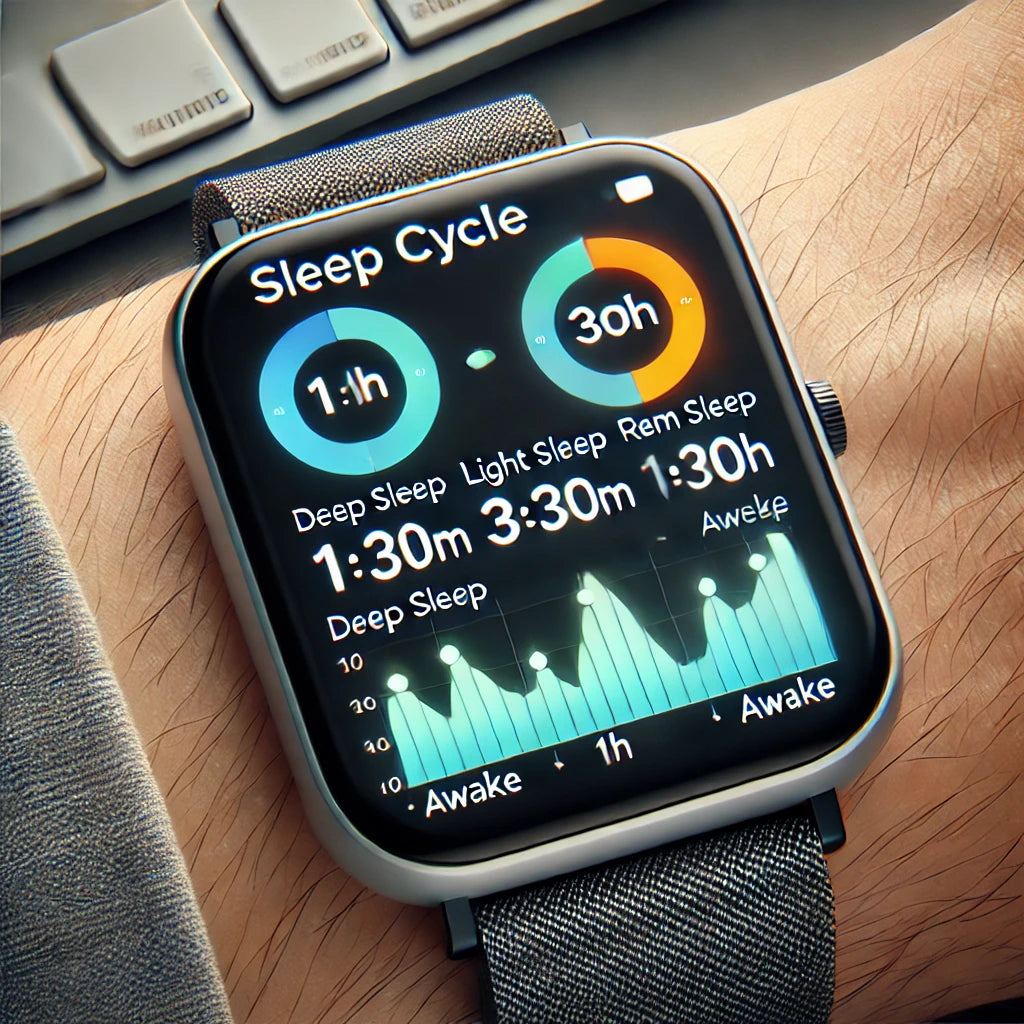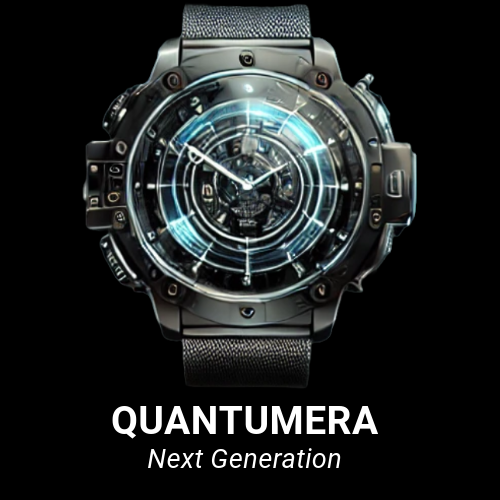
Understanding the sleep tracking indicator of smartwatches
Share
Smartwatches today offer powerful tools to analyze the quality of our sleep, divided into different phases: wakefulness, deep sleep, and REM sleep. Each phase plays an essential role in our well-being, and tracking them can help us improve our health.
Sleep Phases and Their Meaning
-
Awakening : Even during the night, short periods of wakefulness occur naturally between sleep cycles. Although often brief and poorly remembered, these moments are normal and, if infrequent, do not affect the quality of sleep.
-
Light Sleep : This phase represents the transition between wakefulness and deep sleep. It is the time when the body begins to relax and the heart rate slows down. It constitutes the largest part of sleep and prepares for recovery cycles.
-
Deep Sleep : This is the most restorative phase where the body recovers physically. During deep sleep, the brain slows down and the body regenerates. A lack of deep sleep can affect physical health, immunity, and muscle recovery.
-
Paradoxical Sleep (REM) : Linked to dreams, REM sleep is crucial for memory and cognitive functions. The brain is active, and the body is immobilized to prevent movement during dreams.
How does the watch measure these phases?
Smartwatches use sensors to measure heart rate and movements during the night. By analyzing heart rate variations and micro-movements, they identify sleep phases and calculate their duration.
Good Distribution for Quality Sleep
For an adult:
- Light Sleep : 50-60% of the night.
- Deep Sleep : 15-20%.
- REM sleep : 20-25%.
In young children, REM sleep can be as much as 50% of the total time. As we age, the duration of deep sleep naturally decreases.
Alert Levels to Watch For
- Frequent awakenings : Several prolonged awakenings may signal a disorder.
- Insufficient deep sleep : Less than 10% is often an indicator of poor physical recovery.
- Reduced REM sleep : Less than 15% can affect memory and concentration.
Sleep tracking with a smartwatch helps better understand individual needs and adapt habits for more restful sleep.
Some watches indicate eye movement for REM sleep. Why?
Eye movement is a good indicator of the REM (Rapid Eye Movement) phase of sleep. During this phase, the eyes move rapidly under closed eyelids, which is characteristic of this period of sleep.
REM sleep is the phase where we dream most intensely, and although our brain is very active, our body remains largely paralyzed to avoid reacting to dreams. Rapid eye movements (REM) are one of the hallmarks of this phase, and their detection, often associated with brain activity, is a key indicator for determining REM sleep in studies and sleep tracking tools.
Smartwatches, however, typically don't use eye sensors to detect REM sleep. They rely on heart rate and body movements, which differ slightly from one sleep stage to the next.
Is there a distribution of REM sleep in a night? How many times on average? How many minutes per phase?
Yes, REM sleep occurs in multiple episodes throughout the night. On average, a person goes through 4 to 5 sleep cycles per night, with each cycle lasting between 90 and 120 minutes. REM sleep occurs at the end of each cycle, after the light and deep sleep phases.
Distribution and Duration of Paradoxical Sleep Phases in a Night
-
Number of episodes : A typical night has about 4 to 5 episodes of REM sleep, one per cycle.
-
Episode duration :
- Start of the night : The first episodes of REM sleep are quite short, lasting between 5 and 10 minutes.
- Late Night : Episodes become progressively longer, lasting up to 20 to 40 minutes in the later cycles.
-
Total duration : REM sleep accounts for an average of 20-25% of total sleep time in adults, or about 90 to 120 minutes for a 7-8 hour night.
Evolution During the Night
During the night, the distribution of sleep phases changes:
- Start of the night : Cycles contain more deep sleep and little REM sleep.
- End of the night : The proportion of REM sleep increases, while deep sleep decreases, with cycles then being dominated by light and REM sleep.
Variability with Age
The amount of REM sleep decreases slightly with age. For example:
- Babies : They spend almost 50% of their sleep time in REM phase.
- Adults : About 20-25% of sleep is REM.
- Elderly : The percentage of REM sleep can drop to around 15-20%.
This cyclical distribution of REM sleep is essential for cognitive rest and memory consolidation. Frequent interruptions in these phases can impact sleep quality and cognitive function.
